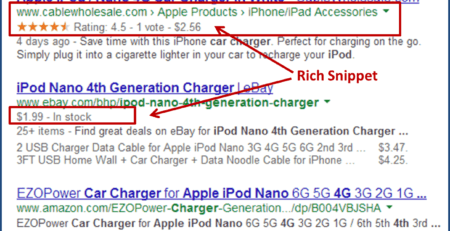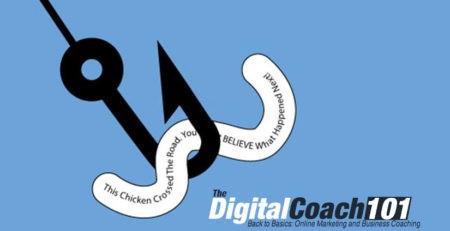Here’s Why You Want to Get Yourself Into A Sticky (Content) Situation
You’ve probably heard of a sticky wicket. However, in case you haven’t, the expression refers to a difficult or tricky position (and no, we’re not talking Karma Sutra here!) It’s similar, I suppose, to getting stuck between a rock and a hard place. But different from when you’re stuck in a rut. And not at all like those awkward situations when you’re stuck for conversation. Or when you stick your nose into someone else’s business.
Actually, when you stop to think about it, most of the associations connected to “sticky” or “stuck” are negative. It never seems to be a good thing to have sticky fingers, or have your head stuck up your, well, someplace where you really have no business sticking it.
2When we think of sticky, we think of childhood holidays with sticky messes made by melting ice-creams. Of sticky fingerprints on newly cleaned windows, of spilt honey and a million ants…
Why do you suppose that is?
Why do we never rejoice in the sheer stickiness of things? Why don’t we love those little bits of plastic that stick statically to our fingers and don’t come off no matter how hard we shake our hands? Why are we not in love with hot, humid summer’s days that make our hair stick to the backs of our necks?
Because, when you really stop to think about it, stickiness is a wonderful thing. How great is it when someone you really like tells you they’re “stuck on you?” Or when they promise to “stick with you” through thick and thin? And how much do we love it when those little self-adhesive hooks actually stay stuck to the wall instead of falling off after two days? Let’s face it, people, stickiness is awesome!!
Especially when it comes to content.
What Is Sticky Content?
“ A lie can get halfway around the world before the truth can even get its boots on.” An astute chap was Mark Twain. He really hit the proverbial nail on its proverbial head with that one. How quickly do conspiracy theories, urban legends and scaremonger-like public health porkies go viral, while your honest-to-goodness, here’s-a-great-product-that-can-really-help-you marketing campaign fails to, well, stick?
In their book, “Made To Stick: Why Some Ideas Survive And Others Die,” bestselling authors Dan and Chip Heath describe it thus: “The romantic notion we have of “creativity” as being far from formulaic and possessed by few people is not entirely accurate — there are actually many common traits of ideas that stick in people’s minds, and accounting for these traits when crafting a message can substantially increase the likelihood that people will retain your idea.”
Basically, then, sticky content is content people come back to time and time again. Shallow news stories are quickly forgotten as soon as the next big thing hits. Sticky content, on the other hand, stands the test of time. It is remembered and referred to long after it was originally published.
How Do You Create Sticky Content?
The Heath brothers refer to a SUCCES formula when it comes creating content that really sticks. This is a clever little anagram for the following key components:
Simple
According to Digital Marketing whizz Neil Patel, a typical Internet user only reads about 20% of the words on a web page. They usually just scan the article, but complex writing makes this difficult. If a visitor can’t find meaning in your post, they won’t stick on it.
Sticky content is short and simple. It cleverly and effectively condenses complex, multi-faceted ideas into one, easy-to-understand concept. It goes beyond the traditional “elevator pitch,” in which you have 30 seconds to sell yourself. Sticky content is more a case of selling your product in one catchy, short, memorable phrase.
If your product or service is very technical and complicated, this is especially relevant. It’s true that occasionally, white papers written by experts for experts have their place. Ultimately, however, the content on your site is meant for the average consumer. Average consumers do not have the time or the inclination to wade through acres of jargon.
Jargon, in fact, is the arch-enemy of sticky content. Pretend for a moment that you make jeans. It may be true that you use a 10-step manufacturing process and dye your jeans in oak vats crafted from the wood of thousand-year-old trees only found on the slopes of ancient volcanoes. But, as impressive as you think this fact might be, all potential buyers of your jeans want to know is whether or not they’ll look sexy in them. That’s pretty much it. So lose the techno-speak and the snooze-inducing fact fest.
Unexpected
Sticky content is both interesting and surprising. It piques our curiosity and exceeds our expectations. It’s not enough for content to grab our attention. To be properly sticky, it has to keep it.
Sticky content challenges convention. A classic example of this is using a provocative headline or title. An article entitled “10 Things You Should Know About Our Jeans” is not really going to make you leap out of bed in the morning. But one with the headline “Here Are 10 Reasons Why You Should Get Into Our Pants” just might. Negative headlines are also effective: “Don’t Read This If You’re Happy With How You Look In Jeans.”
Great content becomes sticky when it challenges conventional expectations and understanding. It keeps us reading because we want to find the answers to the questions it’s created upfront.
Concrete
This one flies somewhat in the face of traditional content wisdom. Many gurus tell us to “sell the sizzle, not the steak.” In other words, to focus on benefits, not features. Sticky content, on the other hand, is real and tangible. It’s not soft skin, it’s moisturiser. It’s about things and examples, not ideas and statistics.
Sticky content is firmly, well, stuck, in the real, and it avoids the abstract like the plague. It also hates metaphors and jargon. Actually, let’s face it: no one likes jargon. It is the smelly feet of the content world. The limp handshake, the halitosis and the chronic sniff. In other words, jargon is the Teflon of the content world. Definitely not sticky.
Credible
It’s a tad ironic, but incredible content is highly credible. It is backed up by referencing authoritative external sources, is well written and makes sense. Customer reviews are great sources of credibility, so use them shamelessly. People also love money back guarantees and free trial periods. Not only are they awesome ways to entice people to try your product, they add huge amounts of credibility to your content.
Emotional
As human beings, we have three basic emotional drivers – sex, greed and fear. Sticky content taps into one or all of these emotions. It gets us deep down inside, moving us. It tugs on all kinds of emotions. It makes us feel, and, even more importantly, it makes us care.
Here’s a great tip – people usually care about themselves. A lot. So content that taps into this is always going to be a winner. Sticky content is aspirational – showing people how to get to where they want to be. Or think they want to be. It lets them believe they can become anyone they want.
John Caples, one of the most well-known and best copywriters of all time, said, “First and foremost, try to get self-interest into every headline you write.” It’s a slightly damning indictment on human nature, but hey ho. If it works, let’s do it!
Story
People just love a good story! Sticky content is often in story format, with a simple plot that we can relate to. A picture may be worth a thousand words, but a thousand-word story beats the heck out of thousands of statistics! So tell the story of the woman who still wears the pair of your jeans she bought 15 years ago with the last of her money. The next day she got a new job and they’ve been her lucky jeans ever since. That’s a story worth remembering. A sticky story.
Why Sticky Content Is So Important
Fifteen seconds. That’s all over half the first time visitors to your site will spend looking at it. In that precious quarter of a minute, they will make the crucial decision whether or not to continue reading. It’s therefore impossible to overstate the importance of having quality, shareable and informative content. You have to make people want to come back.
Sticky content increases your conversion rate and reduces the costs of drawing traffic to your site. If you’d like some help pouring glue, honey and those feisty little fuzzy seed balls all over your website, chat to Digital Coach. Stick with us and we’ll make you famous. True story.












